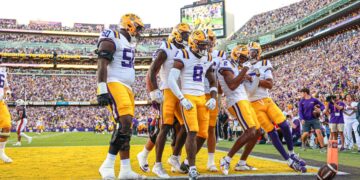Lefty gunplay age—now that’s something that might make you pause for a moment. What does it mean? Well, for some, it’s an exciting milestone; for others, it’s a fascinating journey into understanding left-handedness, how it relates to gunplay and its connection to age. But don’t worry, by the end of this article, you’ll know all about it and why it’s such an intriguing topic.
Being left-handed, or a “lefty,” isn’t as uncommon as it might seem, but the world often feels like it’s built for right-handed people. This article dives into the specifics of the lefty gunplay age, what it means, and why it matters. Along the way, you’ll learn about left-handedness, how it influences skills like handling guns, and why age factors into the equation.
So, grab a seat, and let’s unravel the concept of “lefty gunplay age” in a way that’s easy to understand, thorough, and even a bit fun!
What Is Lefty Gunplay Age?
Let’s break it down: “Lefty gunplay age” combines the unique experiences of left-handed individuals when they learn or practice gun handling and shooting. It refers to the specific age at which left-handed people might begin training with firearms, taking into account the distinct techniques and adjustments they need to make to handle a gun effectively.
Lefty gunplay age is all about understanding that lefties have to navigate a world built for right-handers—especially when it comes to handling tools or weapons like firearms. Learning gunplay as a lefty can feel a bit like swimming upstream, and the age when someone starts learning makes a big difference. Age factors into how quickly individuals can adjust, practice, and become proficient at using firearms—and, let’s face it, it’s also about having the right mindset and the right tools.
Why Is Left-Handedness So Special?
Before we dive deeper into the lefty gunplay age, let’s explore what makes being a lefty so unique.
- Approximately 10% of the World: Only about 10% of people are left-handed, which makes left-handed individuals somewhat rare. This has led to many tools—scissors and firearms—being designed primarily for right-handers.
- Different Brain Wiring: The brains of left-handed people work differently, with the right hemisphere playing a more significant role. This difference in brain wiring can influence skills like spatial awareness, hand-eye coordination, and creativity.
- A History of Adaptation: Throughout history, lefties have had to adapt to a world where many tools and instruments are not designed with them in mind. Regarding gunplay, adaptation is a vital part of the journey.
These unique features mean that when a lefty takes up firearms, there are distinct challenges andt opportunities.
The Challenges of Gunplay for Left-Handed People
Handling guns presents unique challenges for left-handed individuals that can affect their learning and performance.
1. Firearm Design
Most firearms are designed for right-handed use, meaning lefties have to deal with:
- Ejection Ports: Guns often have ejection ports on the right side, which means spent casings can fly across a lefty’s face, creating a potential hazard.
- Controls: Controls like safety levers, magazine releases, and bolt handles are generally positioned for right-handed use. Lefties must often adjust their grip or stance to operate these controls comfortably.
2. Learning Curve
Lefty gunplay age is influenced by how quickly a left-handed person can adapt to these obstacles. The learning curve for lefties can be steep because they have to get used to handling guns that aren’t exactly built for them.
- Stance Adjustments: Left-handed shooters must often modify their stance to ensure stability and accuracy.
- Eye Dominance: Many left-handed people are right-eye dominant, so they must make further adjustments when aiming.
These challenges can make learning gunplay more difficult, especially for younger lefties, which is why “lefty gunplay age” is an important concept—it’s the age when a lefty first starts understanding and mastering these challenges.
Best Age to Start Gunplay for Left-Handed Individuals
Now, when we talk about the “lefty gunplay age,” a natural question comes up: What’s the best age for a lefty to start learning gunplay?
Age and Motor Skills
Motor skills significantly affect how well someone can handle a firearm. For left-handed individuals, the age at which they start practicing matters because:
- Early Adolescence (Ages 10-14): This is often an excellent age to start practicing, as motor skills are still developing, and the brain is more adaptable. Learning the techniques needed for left-handed shooting can be easier at this age.
- Late Adolescence (Ages 15-18): Individuals have better coordination and can more effectively deal with the challenges of lefty gunplay. They are also more capable of understanding the adjustments needed for safety and accuracy.
Physical and Mental Maturity
Physical strength and mental maturity are also critical factors in the lefty gunplay age. A certain level of physical maturity is needed to handle the weight of a firearm properly, and the mental maturity to understand the responsibility of handling guns is crucial.
- Mental Readiness: This aspect is often age-dependent. A young person may have the motor skills but lack the maturity to handle firearms safely.
- Adapting to a Right-Handed World: It takes time to adapt to a world where almost everything, including firearms, is designed for right-handed use. Starting at an age when one can grasp these concepts entirely makes a difference in how quickly and efficiently someone becomes proficient.
Tips for Left-Handed Gunplay Success
If you’re a lefty interested in learning how to handle firearms, don’t let the challenges hold you back! There are plenty of ways to make the process smoother.
1. Choose the Right Firearm
There are firearms explicitly designed for left-handed shooters, and choosing the right one can make a huge difference. Some things to consider:
- Left-Handed Firearms: Some manufacturers offer firearms specifically designed for lefties, with ejection ports and controls on the left side.
- Ambidextrous Controls: Look for guns with ambidextrous controls, such as safeties and magazine releases, that can be operated comfortably with either hand.
2. Learn Proper Stance and Grip
An excellent shooting stance and proper grip are essential for anyone learning gunplay. Still, they are particularly critical for lefties who need to adjust to firearms designed for right-handed users.
- Stance: Position your body to compensate for the controls and ejection ports. This may mean adjusting your stance slightly to avoid casings.
- Grip: Hold the gun so you can comfortably access the controls, even if it means adjusting from the “standard” grip.
3. Practice Consistently
Practice is essential for mastering any skill, and it’s no different for left-handed gunplay. Consistent practice helps you develop the muscle memory needed to make using right-handed firearms feel more natural.
- Dry Fire Practice: Practicing without live ammunition allows you to focus on your technique without the distraction of recoil or noise.
- Live Fire Practice: Once you feel comfortable, incorporate live fire practice to get to exercise.
4. Find a Coach Who Understands
Working with a shooting instructor who understands the challenges faced by lefties can make a significant difference in your progress.
- Experience with Lefties: Not every coach will have experience with left-handed shooters, so finding one who does can help you get the tips and adjustments you need.
- Customized Training: A coach familiar with left-handed shooting can provide personalized guidance and help you overcome specific obstacles.
Lefty Gunplay Age and Safety Considerations
Safety is a crucial aspect of learning gunplay, regardless of whether you’re left- or right-handed. However, for lefties, there are additional considerations to keep in mind.
Proper Use of Safety Gear
- Eye Protection: Lefties often have to deal with spent casings ejecting close to their face, so eye protection is even more critical.
- Customized Gear: Consider investing in gear that suits your left-handed needs, such as gloves that offer the best grip for your dominant hand.
Understand Your Firearm
Knowing how your firearm works, including where the ejection port is located and how to operate all of the controls safely, is especially important for left-handed shooters.
- Modify Where Necessary: Don’t hesitate to modify your firearm to suit your left-handed needs. This could mean switching a safety lever to the other side or adding accessories that make the gun more comfortable.
The Role of Ambidexterity in Lefty Gunplay
One fascinating aspect of the lefty gunplay age is the role of ambidexterity. Many left-handed people end up becoming somewhat ambidextrous, especially when learning skills like gunplay.
Training the Non-Dominant Hand
- Strengthening Skills: Lefties often find themselves practicing with their non-dominant hand simply because of the Availability of right-handed firearms.
- Improving Adaptability: This kind of training helps with gunplay and improves adaptability in other aspects of life.
Benefits of Ambidexterity
- Versatility: Using both hands effectively gives left-handed shooters a significant advantage in various situations.
- Confidence: Developing ambidexterity can boost confidence, allowing lefties to tackle challenges they may have previously found daunting.
Table: Lefty Gunplay Age Recommendations by Age Group
| Age Group | Key Focus Areas | Recommended Training |
|---|---|---|
| 10-14 Years | Basic Safety and Handling | Dry fire practice, supervised live fire |
| 15-18 Years | Technique and Stance | Consistent live fire practice, lefty-specific stance training |
| 19+ Years | Advanced Skills and Adaptation | Customizing firearms, practicing ambidexterity |
This table offers a simple overview of the recommended focus areas and training methods based on age for left-handed individuals learning gunplay.
Why Lefty Gunplay Age Matters in the Long Run
Understanding lefty gunplay age is about more than just figuring out when to start. It’s about setting the foundation for safe, confident, and skilled firearm handling as a lefty.
- Adaptation Leads to Mastery: The earlier a left-handed person learns to adapt, the more proficient they become. It’s not just about holding a gun; it’s about mastering the skill in a way that works for the individual.
- Building Confidence: Starting at the right age and progressing with the proper training can build confidence, which is crucial for any shooter, especially those dealing with additional challenges.
Final Thoughts on Lefty Gunplay Age
When it comes to the lefty gunplay age, it’s all about understanding the unique challenges faced by left-handed individuals and finding the best ways to overcome them. Age plays a significant role in learning, adapting, and ultimately mastering gunplay skills for lefties.
Left-handed shooters can achieve proficiency and confidence in handling firearms with the right tools, consistent practice, and determination. The journey might have a few extra twists and turns compared to right-handed shooters, but success is absolutely within reach with patience and the right mindset.
Lefty gunplay age is a unique and valuable concept that helps us understand the importance of tailored learning, appropriate timing, and the power of adaptability. So, if you’re a lefty interested in gunplay, don’t let the challenges intimidate you—embrace them, start at the right time, and aim for success!
Hopefully, this article has helped clarify what lefty gunplay age is all about and provided some valuable insights for anyone looking to understand or embark on this unique journey. Do you have any questions or thoughts? Feel free to share—we’re all here to learn and grow together




































